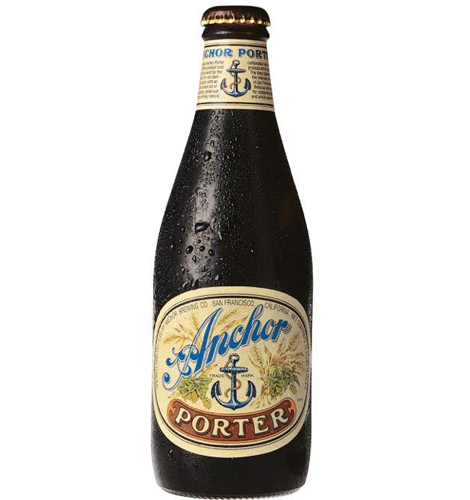The weather outside is getting colder, which means it’s time to break out some darker beers. While you can certainly enjoy a nice porter anytime of year, the brew is particularly well-suited to cool autumn months, and it has a pretty interesting history to boot. By the way, you can also check out our tasting/ranking of 35 American porters here.
The first thing you need to know about porters is that the beer style started out as more of a beer cocktail than a brew all of its own. It reportedly got its start in the early 1700s when a brewer in London combined an older and newer beer together in a barrel and started serving it. Turns out, it wasn’t bad. The mixture allowed them to make a drinkable beer that wouldn’t break the bank. There’s a bit of debate on whether the original blend was made up of just two beers, or three. The triple blend story involves a London brewer named Ralph Harwood, and a drink known as “Three Threads,” with the three threads being three different parts of the mix.
Regardless of how many parts there were, the brew caught on with the working class, especially those in London who were employed as porters (go figure), ultimately leading to the beer style being known as “porter.” It was originally made using brown malt that was dried over a wood fire. The char on that malt gave the brew its distinctive smoky flavor.
As the beer started to gain popularity in the late 1700s, it was more economical for brewers to use pale malt instead. That made the beer cheaper to make, but also lighter in color, which made some customers think they were getting a watered down beer. To compensate, brewers started adding things like opium and hemp to the beer. As you may have already guessed, that practice isn’t exactly going down in today’s beers.
By the 1800s, the beer was being produced by breweries for the mass market, and brewers had figured out how to address that whole “light-colored beer” problem thanks to a man named David Wheeler who created a malt roasting drum. The drum allowed brewers to roast malt without burning it, creating what is now known as “black patent malt,” which could give the beer that dark color everyone wanted by just using it for 10% of the recipe. It was a win for everyone.
Of course, like any good historical event, there’s also a contradicting history for the beer that suggests it originally came from the Netherlands. There, residents were sipping on a beer called Poorter as early as the 14th century.

Porters reportedly made their way to Ireland in 1776, where Guinness eventually picked up the style and started brewing it, a practice it continued until 1974. The style made its way to the U.S. in the late 1700s, but disappeared during the prohibition era. The first brewery to start brewing the style post-prohibition in the U.S. was Anchor Steam, which created its first batch of porter in 1972. Anchor’s porter is still being sold today.
Think about all that next time you’re enjoying a porter at your neighborhood bar, and be sure to tell us about your favorite porter in the the comments.